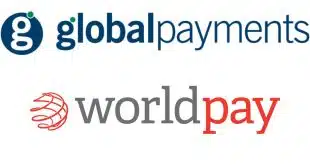After the election, many in the payments industry hoped the Consumer Financial Protection Bureau would be eliminated. While it does not seem like that will happen in the immediate future, the power of the Bureau has been curtailed. But where do things go from here?
With its nomination of a new director, the administration seems to have signaled it expects the agency to be around for at least a little while. Jonathan McKernan’s nomination to be the director of the Consumer Financial Protection Bureau passed the Senate Banking Committee on March 6 in a 13-11 party-line vote. Treasury Secretary Scott Bessent was appointed acting director on Jan. 31, following the dismissal of Rohit Chopra. On Feb. 8, Office of Management and Budget director Russell Vought took over as acting director. Much like other cabinet nominees, McKernan likely will be confirmed by the Senate in a party-line vote.
It is important to remember that the CFPB was created by the Dodd Frank Act. Since it is a product of legislation, eliminating the agency will require new legislation. But as long as Elizabeth Warren is in the Senate, we can expect any bill that would eliminate the agency would meet with a filibuster.
But the administration does not need a law to eliminate the agency as a regulator. Instead, the administration’s current strategy seems to be to reduce the Bureau’s power by eliminating its staff and resources.
When Bessent took over, he told staff not to do any work unless it was approved by the director or required by law. Since then, mass layoffs of Bureau staff have resulted in a lawsuit over the firing of staff. In addition, the CFPB appears to be pulling back in other ways. It has dropped at least six lawsuits that it had filed before the new administration took office, including actions against Capital One, Rocket, Homes, Pennsylvania Higher Education Assistance Agency, Vanderbilt Mortgage and Finance, and Heights Finance Holding Company.
In March, the CFPB said it was dropping its lawsuit against Early Warning Services, which operates the peer-to-peer payments service Zelle, along with three of its owner banks—Bank of America, JPMorgan Chase, and Wells Fargo, “with prejudice,” according to CNBC. In December, the CFPB sued Early Warning Services, along with the three banks, alleging that the companies did not investigate fraud and reimburse consumers for fraud and error.
While an empty CFPB might seem like a good option for the industry, there are risks to a skeletonized Bureau. An effectively closed CFPB will not be making any changes to the rules that do exist. This means rules cannot be updated for new technology, and the industry cannot get modifications to existing rules that would benefit both them and their customers.
Regardless of the status of the agency itself, the rules it has written are still on the books. This means every company is at risk of the broken-taillight theory of enforcement. The short version of this meme is that getting pulled over for a broken taillight can lead to all sorts of other legal problems. If a regulator does an exam and notices one problem, examiners can use rules that were originally under the purview of the CFPB to add to the compliance headaches.
Lawsuits filed by customers might also use the existing regulations to make a case against companies. And the states might try to make up for a perceived gap in federal enforcement.
The optimal outcome is a CFPB that acts with restraint and works with the industry so that both sides have the common goal of protecting consumers while promoting innovation.
—Ben Jackson bjackson@ipa.org





